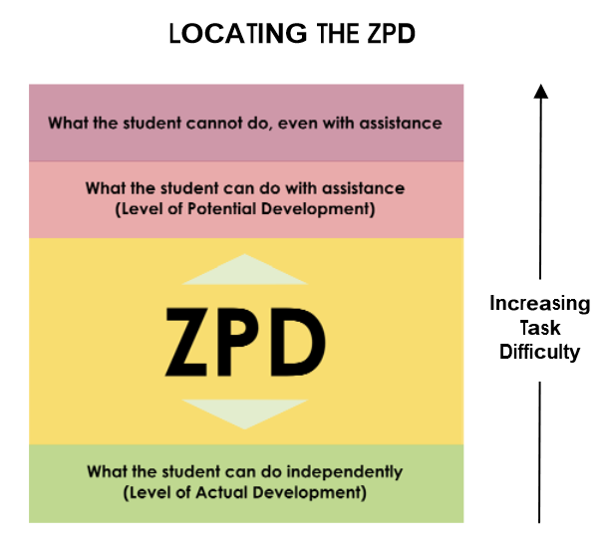
SCAFFOLDING IN STAR
[div class=”one-half first”]
Scaffolding is a term that describes the process by which an adult supports a child to engage in a task that is slightly beyond her independent capabilities. Metaphorically, scaffolding is the support an adult provides a child so that she can reach higher levels. Scaffolding is an important aspect of the STAR read-aloud practices.
[end-div]
[div class=”one-half”]
[div class=”pd-box”]In this section, you will:
Understand the historical context of scaffolding
Identify high and low support strategies[end-div]
[end-div]

[div id=”zpd-text”]

ZONE OF PROXIMAL DEVELOPMENT (ZPD)
[end-div]
[div class=”one-half first pd-box”]
Scaffolding is often ascribed to the Russian Psychologist Lev Vygotsky (1978)
Vygotsky’s theory of instruction emphasizes the need to offer instruction that exceeds a child’s current ability; this mechanism is termed scaffolding.
Vygotsky believed that the purpose of teaching was to help children develop skills that they had yet to grasp; thus, instruction must precede development rather than follow it.
[end-div]
[div class=”one-half”]
[end-div]
According to Vygotsky’s theory, the ZPD describes the area between a child’s current and future ability. The ZPD is a hypothesized construct that describes the range of children’s abilities from what they are capable of doing to what they are unable to do on their own. When teaching, teachers should encourage child learning by using activities and supporting strategies that enable a child to accomplish a task with the assistance of another peer or teacher. As children begin to master skills on their own, teachers adjust their teaching strategies accordingly so that the children continue to advance.
